U.S. HVAC Market Projections: Expected Growth to $129B by 2025
The HVAC (Heating, Ventilation, and Air Conditioning) industry in the U.S. is on a steep growth trajectory, with projections indicating it will reach an impressive $129 billion by 2025. This anticipated growth stems from several factors, including rising demand for energy-efficient systems, increasing construction activities, and heightened awareness of indoor air quality.
Driving Forces Behind Market Growth
Several forces are propelling the U.S. HVAC market forward:
- Energy Efficiency Standards: New regulations and codes are pushing for energy-efficient HVAC solutions. Consumers and businesses are prioritizing systems that lower energy costs and reduce environmental impact.
- Smart Technology: The rise of the Internet of Things (IoT) is leading to smarter HVAC systems. These technologies allow users to monitor and control their heating and cooling remotely, resulting in enhanced user experience and efficient energy usage.
- Commercial Sector Growth: A booming real estate market, particularly in commercial properties, is driving the demand for advanced HVAC systems. New constructions are integrating sophisticated HVAC solutions to ensure optimal climate control.
- Health Awareness: The increasing focus on health and wellness has heightened interest in systems that improve indoor air quality. People seek HVAC solutions that filter pollutants and regulate humidity.
Workforce Perspective
The workforce outlook for the HVAC industry appears robust. With an expected growth in market size, there is a corresponding increase in job opportunities. The Bureau of Labor Statistics predicts that employment for HVAC technicians will grow by 5% from 2022 to 2032, adding over 20,000 new jobs annually.
Training programs are increasingly crucial as both experienced professionals and newcomers are needed to meet market demands. Many community colleges, trade schools, and online institutions offer HVAC training, preparing a skilled workforce to support this expanding industry. Moreover, companies are investing in workforce development initiatives, recognizing that a knowledgeable team is essential in maintaining competitive advantage.
Impact of Energy Regulations and Incentives
Government regulations play a major role in shaping the HVAC market. New energy efficiency standards mean that manufacturers must innovate continually. Here are some aspects of regulatory impact:
| Regulation Type | Description | Impact |
|---|---|---|
| Energy Star | Certification program for energy-efficient products | Encourages consumers to choose efficient options |
| Tax Incentives | Federal tax credits for energy-efficient upgrades | Motivates consumers and businesses to adopt new technologies |
| State Regulations | State-level efficiency mandates | Promote investments in sustainable solutions |
Technological Advances in HVAC
Technological innovations are reshaping the HVAC landscape. Some key advancements include:
- Variable Refrigerant Flow (VRF) Systems: These systems provide precise temperature control for different zones, improving comfort while saving energy.
- IoT Integration: Connected HVAC systems allow for remote management, real-time diagnostics, and energy monitoring, facilitating optimal performance.
- Advanced Filtration: New filtration technologies improve indoor air quality by trapping allergens and pollutants more effectively.
As these technologies continue to evolve, they will play a crucial role in further driving the HVAC market’s growth and enhancing customer experience.
Market Players and Competition
Some key players in the U.S. HVAC market include:
These companies are consistently innovating and adapting to market trends, ensuring they remain competitive in a rapidly evolving industry.
The U.S. HVAC market is set for significant growth, with strong drivers including advancements in technology, regulatory support, and a robust workforce outlook. For anyone considering a career in this field, now is a prime time to get involved in an industry that is poised for lasting impact and success.
For more detailed insights and updates on the HVAC market trends, visit ACHR News or HVAC.com.
Key Drivers Behind HVAC Market Expansion
The HVAC (Heating, Ventilation, and Air Conditioning) market in the U.S. is on a robust growth trajectory, with projections indicating it will reach a staggering $129 billion by 2025. Several key drivers are fueling this impressive expansion, making it an interesting area for both industry stakeholders and consumers.
One significant factor behind the growing HVAC market is the increasing demand for energy-efficient systems. As homeowners and businesses look to reduce their energy costs, there is a rising interest in technologies that offer better efficiency. Energy-efficient HVAC systems not only lower utility bills but also contribute to a reduced carbon footprint, aligning with the broader trend towards sustainability. Innovations, such as smart thermostats and variable refrigerant flow systems, enhance energy savings while improving comfort.
An aging infrastructure also plays a crucial role. Many existing HVAC systems in residential and commercial buildings are outdated and less efficient. As these systems reach the end of their lifespan, a replacement demand emerges. Homeowners and business owners are investing in modern HVAC units equipped with advanced technology that meet current energy standards and regulations.
The gradual shift towards smart homes contributes significantly to the HVAC market expansion. Home automation technologies are becoming increasingly popular, enabling consumers to control their HVAC systems remotely. This integration allows users to monitor energy consumption and automate temperature settings based on their daily routines, enhancing comfort and efficiency. With the rise of Internet of Things (IoT) devices, HVAC manufacturers are innovating models that seamlessly connect to smart home systems.
The construction sector’s growth is another driving force. As new residential and commercial buildings emerge, the demand for HVAC systems naturally increases. Urbanization and population growth lead to a higher requirement for housing and office spaces, presenting substantial opportunities for HVAC companies. Builders and developers are increasingly aware of the need for efficient and durable HVAC solutions in new constructions.
Government regulations and initiatives aimed at reducing energy consumption also impact the HVAC landscape. Many states have implemented strict efficiency standards and rebate programs to encourage homeowners to upgrade to more efficient systems. These regulations create a favorable environment for HVAC businesses, as consumers respond positively to incentives that help offset installation costs.
The following list outlines the major drivers of HVAC market growth:
- Increased demand for energy-efficient systems
- Aging infrastructure leading to replacement needs
- Growth of smart home technologies
- Expansion of the construction industry
- Government regulations and incentives promoting efficiency
Additionally, the focus on indoor air quality (IAQ) has garnered attention in recent years. Events such as the COVID-19 pandemic heightened awareness around the importance of clean air inside homes and workplaces. HVAC systems equipped with advanced filtration technology improve IAQ, leading to healthier living and working environments. This growing emphasis on health has prompted consumers to invest in enhancing their HVAC systems to filter out allergens, pollutants, and pathogens effectively.
The labor market outlook for the HVAC industry is also promising, as there are increasing opportunities for skilled workers. As the demand for HVAC services rises alongside the market expansion, companies are looking to hire qualified technicians. This positive workforce outlook not only supports the industry but may also lead to increased job training and educational programs. As a result, emerging technicians are likely to boost the overall service quality and innovation within the HVAC market.
Another emerging trend is the integration of renewable energy sources with HVAC systems. More consumers are interested in harnessing solar energy or geothermal systems to power their heating and cooling. This synergy not only reduces dependency on fossil fuels but also lowers overall operational costs, making HVAC systems more appealing. As technology continues to evolve, the merging of HVAC with renewable energy will likely become a significant aspect of the market.
The combination of various factors from consumer preferences to overall market dynamics is driving the HVAC market towards unprecedented growth. Stakeholders within the industry must stay informed about these trends to capitalize on the opportunities presented as the market approaches the projected $129 billion mark by 2025.
For more information on HVAC market trends and developments, please visit HVAC.com and ASHRAE.
Emerging Technologies Influencing the HVAC Industry
The HVAC industry is experiencing a rapid transformation driven by emerging technologies that enhance efficiency, sustainability, and user experience. As the industry evolves, HVAC systems are becoming smarter and more connected, allowing users to maintain optimal comfort levels while reducing energy consumption. Here’s a look at some key technologies that are reshaping the HVAC landscape.
Smart Thermostats
Smart thermostats are a game-changer in climate control. These devices allow homeowners to manage their HVAC systems remotely using smartphones or tablets. With adaptive learning capabilities, they adjust temperatures based on user habits, significantly lowering energy bills.
- Energy Savings: Smart thermostats can reduce heating and cooling costs by up to 23%.
- User Control: Users can set schedules and control their systems from anywhere.
- Data Insights: These devices provide data analytics on energy usage, helping users monitor their consumption.
Variable Refrigerant Flow (VRF) Systems
Variable Refrigerant Flow technology allows for precise temperature control in large buildings. VRF systems can heat and cool different spaces simultaneously, accommodating varying needs without wasting energy. This technology is especially beneficial in commercial settings where diverse climate control is essential.
- Efficiency: VRF systems can achieve up to 30% more energy efficiency compared to traditional systems.
- Space-Saving: Compact designs need less space for equipment, maximizing usable area in buildings.
- Flexibility: Users can customize zoning options to meet specific requirements, enhancing user comfort.
IoT Integration
The rise of the Internet of Things (IoT) has revolutionized HVAC management. Connected devices enable real-time monitoring and control of HVAC systems, leading to improved maintenance and operational efficiency.
- Predictive Maintenance: IoT sensors identify potential issues before they escalate, minimizing downtime.
- Comfort Optimization: Systems can automatically adjust settings based on occupancy patterns.
- Data-Driven Decisions: Real-time data analytics supports informed decision-making for operational improvements.
Energy Recovery Ventilation (ERV)
Energy Recovery Ventilation systems help improve indoor air quality while conserving energy. These systems exchange stale indoor air with fresh outdoor air, capturing energy from the exhaust air to regulate temperature, which leads to lower energy consumption.
- Improved Air Quality: By reducing pollutants and moisture, ERV systems enhance occupant comfort.
- Lower Energy Costs: These systems can retain up to 70% of the energy that would typically be lost during ventilation.
- Health Benefits: They contribute to a healthier indoor environment, reducing health risks associated with poor air quality.
Artificial Intelligence (AI) and Machine Learning
AI and machine learning are paving the way for advanced energy management solutions in HVAC systems. By analyzing vast amounts of data, AI can predict usage patterns and optimize energy consumption based on changing variables.
- Efficiency Improvements: AI algorithms can facilitate predictive modeling to enhance performance.
- Smart Automation: Systems can automatically adjust settings based on real-time data and forecasts.
- Enhanced User Experience: AI-driven insights provide tailored recommendations for energy savings.
Renewable Energy Integration
Renewable energy sources like solar panels are increasingly being integrated into HVAC systems. This shift not only enhances energy independence but also significantly reduces carbon footprints.
- Hybrid Systems: Combining solar power with traditional HVAC systems helps decrease reliance on fossil fuels.
- Financial Incentives: Government rebates and incentives can offset initial costs, making adoption more feasible.
- Sustainability: By utilizing green energy, businesses can position themselves as environmentally responsible, boosting their public image.
The HVAC industry is clearly on the cutting edge of technological innovation. As emerging technologies continue to develop, their impact will lead to more energy-efficient, user-friendly, and sustainable systems. Stakeholders should remain vigilant in adopting these advancements to stay competitive in a rapidly evolving market.
For those looking to dive deeper into specific innovations, resources such as U.S. Department of Energy and CDC’s NIOSH provide invaluable insights and findings related to the ongoing tech revolution in HVAC.
The Importance of Energy Efficiency in HVAC Systems
In today’s world, where climate change and energy conservation are hot topics, energy efficiency in HVAC systems plays a crucial role. If you’re considering upgrading your heating, ventilation, and air conditioning (HVAC) system, understanding the importance of energy efficiency can lead to significant benefits for your wallet and the environment.
The Financial Benefits of Energy Efficiency
Investing in energy-efficient HVAC systems can lead to substantial cost savings over time. Here are some ways these systems can save you money:
- Lower Utility Bills: Energy-efficient systems consume less energy. This means you can keep your home comfortable without breaking the bank each month.
- Increased Property Value: Homes equipped with energy-efficient HVAC systems are often more attractive to buyers, resulting in a higher resale value.
- Tax Incentives: Depending on where you live, you may qualify for tax credits or rebates for upgrading to an energy-efficient system.
By choosing an energy-efficient HVAC system, you can effectively reduce your operational costs, making it a smart investment for homeowners and businesses alike.
Environmental Impact
Energy-efficient HVAC systems contribute to a reduced carbon footprint. They produce fewer greenhouse gases, which helps combat climate change. Here’s how energy-efficient systems impact the environment:
- Reduced Energy Consumption: By using less energy to heat or cool your space, these systems help decrease the demand for fossil fuels.
- Less Emission of Pollutants: Fewer emissions mean better air quality. Energy-efficient HVAC systems often include better filtration systems that improve indoor air quality, making environments healthier for you and your family.
- Support for Renewable Energy: Many energy-efficient HVAC systems are compatible with renewable energy sources, such as solar panels, further reducing environmental impact.
Key Features of Energy-Efficient HVAC Systems
Investing in an energy-efficient HVAC system involves understanding the key features that contribute to its performance. Here are some features to consider:
| Feature | Description |
|---|---|
| SEER Rating | The Seasonal Energy Efficiency Ratio measures cooling efficiency. Higher SEER ratings indicate greater energy efficiency. |
| Variable Speed Motors | These motors adjust their speed based on the heating or cooling needs, leading to improved comfort and reduced energy use. |
| Programmable Thermostats | Enable you to set schedules for heating and cooling, optimizing energy use and reducing unnecessary energy waste. |
Integrating these features into your HVAC system can enhance its energy efficiency, resulting in lower energy use and costs.
Choosing the Right System
When selecting an energy-efficient HVAC system, you should consider several factors:
- Home Size: Understand the size of your home to determine the right system capacity.
- Climate: Your local climate will affect your HVAC needs. Choose a system designed for your specific climatic conditions.
- Budget: Assess your budget for both initial installation and long-term operational costs.
Consulting with HVAC professionals can help you navigate these choices and select the right system for your situation.
Staying Informed and Engaged
Staying informed about HVAC systems and ensuring your system is running efficiently is crucial. Regular maintenance—such as changing filters, cleaning ducts, and scheduling professional check-ups—ensures your system runs efficiently for years to come.
For more information and resources on energy-efficient HVAC systems, visit Energy Efficiency & Renewable Energy and Energy Star. These sites provide valuable insights into energy-efficient technologies and incentives available in your area.
By prioritizing energy efficiency in HVAC systems, you’re making choices that benefit both your budget and the planet, reinforcing the importance of mindful consumption in our daily lives.
Workforce Trends: Meeting the Demand for Skilled HVAC Technicians
The U.S. HVAC market is on track to reach a staggering $129 billion by 2025, driven by the increasing need for efficient heating, ventilation, and air conditioning systems in homes and businesses. As this industry grows, so does the demand for skilled HVAC technicians. Understanding the workforce trends is essential for meeting this need and ensuring the longevity of the HVAC profession.
The HVAC industry plays a vital role in maintaining comfortable indoor environments, especially with rising temperatures and changing weather patterns. This creates an opportunity for technicians, as they become essential in the installation, repair, and maintenance of these systems. With such growth projections, let’s look at the key trends influencing the demand for skilled HVAC technicians.
Key Factors Driving Demand for HVAC Technicians
Several factors contribute to the increasing need for skilled workers in the HVAC sector:
- Technological Advancements: The HVAC industry is evolving rapidly due to advancements in technology. New smart systems are more complex, requiring technicians to have updated skills and knowledge.
- Energy Efficiency Standards: Stricter regulations regarding energy efficiency have prompted homeowners and businesses to upgrade their systems, further fueling the demand for skilled technicians who can install and service these advanced systems.
- Older Systems Requiring Replacement: Many HVAC units in use today are aging. As more systems reach the end of their lifespan, technicians will be needed to replace them.
- Increased Indoor Air Quality Awareness: A growing focus on health and wellness drives demand for HVAC systems that not only control temperature but also improve air quality.
Workforce Outlook for Technicians
The workforce outlook for HVAC technicians is promising. According to the Bureau of Labor Statistics, employment for HVAC technicians is expected to grow 5% from 2019 to 2029, faster than the average for other occupations. This trend is driven by the projected growth of the construction industry and the rising need for energy-efficient systems.
Factors Influencing Technician Recruitment
Recruiting skilled technicians has become a top priority for many HVAC companies. Here are some critical factors impacting recruitment and retention:
- Training and Certification: Proper training programs and certification opportunities ensure that technicians are well-prepared for the evolving demands of the industry.
- Incentives and Pay: Companies are increasingly offering competitive salaries, bonuses, and benefits to attract top talent.
- Career Advancement Opportunities: Clear paths for career progression can significantly influence recruitment efforts, encouraging technicians to view HVAC as a long-term career.
- Diversity Initiatives: Emphasizing diversity within the workforce can enhance recruitment by appealing to a broader range of candidates.
Training Programs Shaping the Future
Training programs play a crucial role in developing skilled HVAC technicians. Many community colleges and trade schools offer HVAC courses, combining hands-on training with classroom instruction. Programs often cover topics such as:
- Understanding HVAC systems
- Refrigeration principles
- Electrical systems and troubleshooting
- Installation techniques and safety standards
Organizations like the National Center for Construction Education and Research (NCCER) provide certification programs that enhance the skills and competitiveness of technicians in the job market.
The U.S. HVAC market is primed for growth, with a projected value of $129 billion by 2025. As demand for skilled technicians rises, the workforce outlook appears to be positive. By investing in training and embracing technological advancements, the HVAC industry can ensure a steady stream of qualified technicians ready to meet the challenges of the future. This creates a vibrant job market for aspiring HVAC professionals while also providing consumers with high-quality, efficient services.
The Role of Government Regulations in Shaping the HVAC Market
The HVAC market in the United States is on a significant growth trajectory, with projections estimating it will reach $129 billion by 2025. This impressive growth can largely be attributed to evolving government regulations aimed at improving energy efficiency and sustainability. Understanding how these regulations shape the HVAC landscape is crucial for industry stakeholders, including manufacturers, contractors, and consumers.
Government regulations play a pivotal role in determining the standards and practices in the HVAC industry. They influence everything from technology advancements to workforce training. Here’s a closer look at some key areas where regulations impact the HVAC market:
Energy Efficiency Standards
Energy efficiency regulations are becoming increasingly stringent across the country. The implementation of the Energy Policy Act of 2005 established baseline efficiency standards for various HVAC equipment. The Department of Energy (DOE) continuously updates these standards, encouraging manufacturers to innovate and produce more energy-efficient systems. For instance:
- SEER Ratings: Seasonal Energy Efficiency Ratio (SEER) ratings are mandatory for air conditioning systems. Higher SEER ratings mean more efficient systems.
- EER Ratings: Energy Efficiency Ratio (EER) specifications dictate how much energy is used while cooling.
- HSPF Ratings: Heating Seasonal Performance Factor (HSPF) outlines the efficiency of heat pumps.
These efficiency regulations not only promote sustainability but also help consumers save on energy bills in the long run.
Refrigerant Regulations
Another essential aspect of government regulation in the HVAC market is the management of refrigerants. The use of hydrofluorocarbons (HFCs) has been targeted due to their high global warming potential. As part of international agreements like the Montreal Protocol, the U.S. is transitioning to more environmentally friendly refrigerants. This shift necessitates new equipment designs and training for technicians, leading to:
- Innovations in refrigerant technology
- New service protocols
- Increased demand for trained professionals
Training and Certification Requirements
With the advancement of technology and the introduction of new regulations, the HVAC workforce must adapt. The federal government and organizations such as the Environmental Protection Agency (EPA) have established certification programs for technicians. These programs ensure that professionals are trained in the latest compliance requirements, safe handling of refrigerants, and the energy efficiency measures mandated by law.
By ensuring that the workforce is well-trained, regulations not only promote safety but also enhance the quality of service delivered to consumers.
Incentive Programs and Tax Credits
The government also offers various incentive programs and tax credits to encourage the adoption of energy-efficient HVAC systems. These programs are designed to motivate homeowners and businesses to invest in modern equipment. Some examples include:
- Residential Energy Efficiency Tax Credit: Homeowners can claim tax credits for installing energy-efficient HVAC systems.
- Energy Efficiency Financing Options: Low-interest loans and rebates for businesses investing in energy-efficient technologies.
These financial incentives not only help offset initial costs but also foster a culture of energy conservation and sustainability.
Future Projections
As the U.S. HVAC market approaches the $129 billion mark by 2025, the ongoing development of government regulations will continue to shape its evolution. Regulations will likely evolve to align with technological advancements and the global push towards a more sustainable future.
While government regulations might sometimes feel cumbersome, they are essential in driving innovation and efficiency in the HVAC market. For more detailed information, resources such as ASHRAE and the HVAC.com provide valuable insights into the latest industry trends and regulations.
Sustainability Practices and Their Impact on HVAC Innovations
The growing demand for sustainability in various sectors has significantly influenced innovations in the HVAC (Heating, Ventilation, and Air Conditioning) industry. As society becomes more aware of the environmental impact of traditional practices, HVAC companies focus on adopting sustainable methods to ensure energy efficiency, reduce carbon footprints, and enhance indoor air quality. The shift towards sustainability not only protects the environment but also offers numerous benefits to consumers.
Sustainable practices refer to actions taken to meet present needs without compromising the ability of future generations to meet their own. In the HVAC sector, sustainability manifests through innovative technologies, energy-efficient systems, and responsible material usage. This article explores different facets of sustainability and their impact on HVAC innovations, emphasizing its significance in shaping a more eco-friendly future.
Energy Efficiency and Smart Technologies
One of the primary focuses of sustainability in HVAC is improving energy efficiency. With the increasing costs of energy and the dire need to reduce greenhouse gas emissions, manufacturers prioritize creating systems that consume less energy yet deliver optimal performance. Key advancements include:
- Smart Thermostats: These devices can learn user habits and adjust temperature settings accordingly. By optimizing heating and cooling schedules, smart thermostats can significantly reduce energy usage.
- Variable-Speed Technology: Instead of operating at full capacity constantly, variable-speed systems can adjust airflow based on real-time needs. This not only enhances comfort but also leads to substantial energy savings.
- IoT Integration: Internet of Things (IoT) technology allows HVAC systems to communicate with other devices, enabling better control and efficiency. For example, integrating HVAC systems with smart home ecosystems can lead to automated adjustments based on outside temperature and occupancy.
Utilizing Renewable Energy Sources
The integration of renewable energy sources in HVAC systems plays a vital role in promoting sustainability. Technologies such as heat pumps, solar thermal systems, and geothermal systems utilize natural resources to provide heating and cooling solutions:
- Heat Pumps: These systems transfer heat instead of generating it, making them highly efficient. They can extract heat from the ground or air, subsequently reducing reliance on fossil fuels.
- Solar Thermal Systems: By harnessing solar energy, these systems can provide hot water or assist in heating spaces, leading to a reduction in conventional energy consumption.
- Geothermal HVAC Systems: These systems use the earth’s stable temperature to provide efficient heating and cooling. They have lower operating costs and a significant reduction in energy use over time.
Material Innovation and Lifecycle Assessment
Another significant aspect of sustainability in the HVAC industry is the focus on materials. The use of recyclable, and low-impact materials in manufacturing leads to more sustainable choices. Some principles include:
- Recyclable Components: Utilizing materials that can be recycled at the end of their lifecycle can substantially reduce the environmental impact.
- Low-Impact Manufacturing: This includes minimizing water use, emissions, and waste during production. Manufacturers are increasingly adopting green practices to ensure sustainability.
- Lifecycle Assessment (LCA): Conducting an LCA helps manufacturers understand the environmental impacts of their products, leading to informed choices in both design and production.
Impact on Business and Consumer Behavior
Businesses that adopt sustainable practices in HVAC not only address environmental concerns but also attract conscious consumers. As more homeowners and companies look for eco-friendly options, HVAC systems with a focus on sustainability have become more marketable. This shift benefits both parties:
- Cost Savings: Energy-efficient systems lead to lower utility bills for consumers, while businesses benefit from reduced operating costs.
- Increased Brand Loyalty: Companies recognized for sustainability can foster customer trust and loyalty, thus enhancing their market position.
- Regulatory Compliance: As governments implement stricter regulations to combat climate change, adopting sustainable practices can keep businesses compliant and avoid potential penalties.
As the HVAC industry continues to evolve in response to sustainability demands, staying updated on innovations is crucial. The current landscape shows promise, boosting efficiency while addressing environmental concerns. For further information on sustainability practices and their impact on HVAC innovations, you may visit energy.gov or hvac.com.
With a clear agenda toward sustainability, the HVAC market is not only transforming operational practices but also cultivating awareness about environmental issues. Investing in sustainable HVAC technologies marks a significant step forward for a cleaner, healthier planet.
Key Takeaway:
The U.S. HVAC market is on an impressive growth trajectory, projected to reach an astounding $129 billion by 2025. This anticipated expansion is driven by several key factors that are shaping the industry landscape. A primary driver of this growth is the increasing demand for energy-efficient heating, ventilation, and air conditioning systems. As consumers and businesses grow more environmentally conscious, the push for sustainable and energy-efficient solutions has never been stronger. Emerging technologies such as smart thermostats, advanced air purification systems, and IoT integration are transforming how HVAC systems operate, allowing for improved efficiency and user-friendliness.
Energy efficiency has become more than just a trend; it is a necessity in today’s climate. Federal and state regulations are playing a crucial role in this evolution. Governments are enforcing stricter energy efficiency standards, encouraging manufacturers and consumers alike to invest in more efficient systems. As these regulations become increasingly stringent, they push the industry toward innovation and better environmental practices.
Additionally, the HVAC workforce is experiencing a positive outlook, with a growing need for skilled technicians. As the industry expands, so does the requirement for certified professionals who can install, maintain, and repair these advanced systems. Educational institutions are adapting their programs to meet this demand, ensuring that new technicians are well-equipped with the necessary skills to thrive in a competitive job market.
Sustainability practices are reshaping HVAC innovations, leading to the development of systems that not only meet regulatory standards but also significantly reduce greenhouse gas emissions. The focus on eco-friendly materials and technologies is helping to enhance the overall performance of HVAC systems while reducing their environmental footprint.
The U.S. HVAC market is set for remarkable growth, influenced by emerging technologies, a strong emphasis on energy efficiency, an evolving workforce, and government regulations. Embracing sustainability practices will continue to drive innovation and shape the future of the industry, ultimately fostering a healthier environment and a robust economic framework.
Conclusion
As the U.S. HVAC market is on track to reach a remarkable $129 billion by 2025, several factors converge to create an exciting landscape for both consumers and businesses. The growth is propelled by rising demand for energy-efficient systems and an increasing awareness of environmental sustainability. Emerging technologies, such as smart home integration and advanced climate control systems, are reshaping how we think about heating and cooling our spaces, offering solutions that are both innovative and efficient.
The movement towards energy efficiency not only benefits our planet but also translates to cost savings for end-users, making it a win-win scenario. As the market expands, it leads to a pronounced need for skilled HVAC technicians. Meeting this demand will require strategic workforce development to ensure that there are enough trained professionals to implement and maintain these advanced systems.
Furthermore, government regulations play a crucial role in propelling market growth, as they push for stricter energy efficiency standards and support sustainable practices. This regulatory framework encourages companies to innovate while ensuring that safety and environmental concerns are addressed. Sustainability practices are more than just trends; they are becoming the standard in the HVAC industry, driving companies to prioritize eco-friendly solutions that meet consumer demand.
All these elements highlight an evolving market that values innovation, efficiency, and sustainability. With the positive workforce outlook, the HVAC industry is poised for a prosperous future, ensuring that as the market grows, skilled professionals will be ready to meet the challenges and embrace the opportunities that lie ahead.
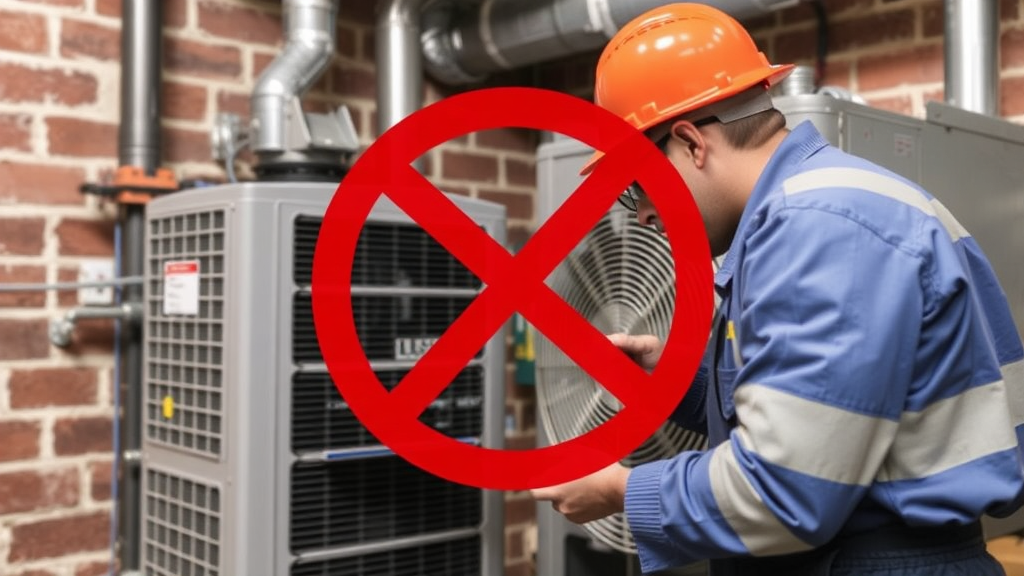
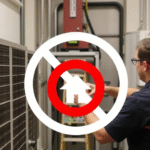
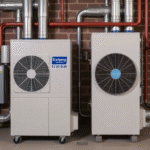
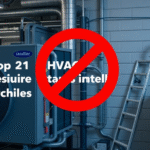
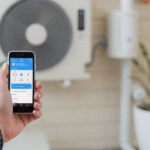
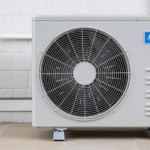
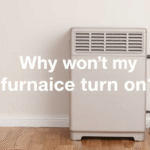
Leave a Reply